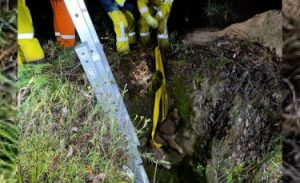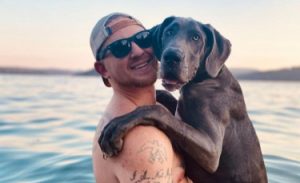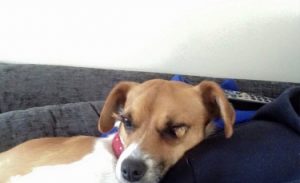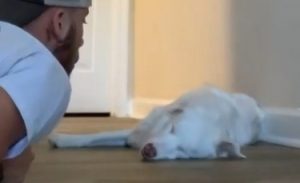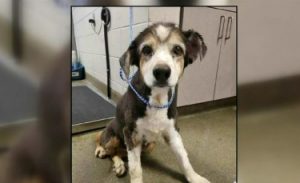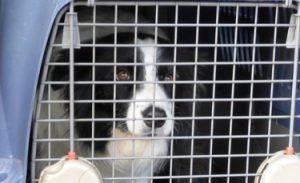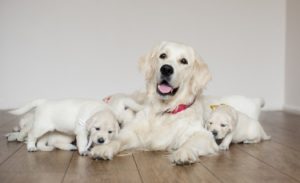Other names: Braque du Midi, Braque de Toulouse
The Braque de l’Ariège is a braccoid type dog, built solidly and harmoniously. It gives off an impression of power and vigor, allied to a certain elegance. The muscles of the Braque de l’Ariège are prominent and their lines are well defined.
<!–
–>

| Short | |
| France | |
| Big | |
| Long |
| Sex | Weight | Cut |
|---|---|---|
| Female | From 25 kg to 30 kg | From 56 cm to 65 cm |
| Male | From 25 kg to 30 kg | From 60 cm to 67 cm |
History of the breed
Appeared during the 19th century, the Braque de l’Ariège is the result of the cross between the old French Braque and different strains of Braques du Sud . Today, we still meet very few representatives of the breed outside its region of origin from which it bears the name. Braque de l’Ariège enthusiasts strive to perpetuate it through quality breeding. The breed of the Braque de l’Ariège was definitively recognized by the Fédération Cynologique Internationale (FCI) on June 28, 1955.
Braque de l’Ariège Pictures
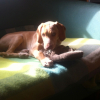
See all Braque de l’Ariège photos from Woopets members
Physical features
His hair: short, shiny and tight, finer and shorter on the head and on the ears.
Its color: pale orange or brown fawn, trout or speckled with white.
His head: long, narrow at the level of the zygomatic arches. The skull is slightly domed, the frontal groove is only very slightly accentuated, the stop little marked. The nose is pink, reddish or brown. The muzzle is long and straight.
His ears: set at or below the line of the eye, not very thick and long.
His eyes: oval in shape, wide open, dark amber or brown in color, displaying a soft, frank and intelligent expression.
His body: robust, but without exaggerated heaviness. The neck is not very long, but it is strong. The withers are well drawn. The back is a bit long, muscular and straight.
Its tail: thick at its base and tapering towards the tip. Attached in the continuity of the line of the croup. Does not rise higher than the top line.
Behavior and character
| Affectionate | |
|---|---|
| Calm | |
| Protective | |
| Independent | |
| Hunter | |
| Barks / howls |
Behavior with others
| Cohabitation with children | |
|---|---|
| Sociable with other animals | |
| Love strangers |
The Braque de l’Ariège has all the qualities of a versatile hunting dog . With great resistance, he can cover great distances and shows great determination. An excellent pointing dog , the Braque de l’Ariège is nonetheless a good daily companion . He is not more stubborn than other hunting dogs and is very attached to his master.
The Braque de l’Ariège
is it right for you? Take the test!
Education
| Clever | |
|---|---|
| Obedient |
A good dose of firmness allows the temperament of the Braque de l’Ariège to be framed sufficiently early. It should be associated with gentleness and not include brutality. The sooner the recall is taught to him, the better it will be to avoid incidents during outings.
Living conditions
| Suitable for apartment living | |
|---|---|
| Good for new masters | |
| Love it hot | |
| Love the cold |
The Braque de l’Ariège is made to live in the countryside . He needs freedom and space to express himself. In town, he must be able to benefit from a large fenced garden and frequent outings. He is not intended to live in an apartment .
Health
| Solid | |
|---|---|
| Ease of gaining weight |
The Braque de l’Ariège is a resistant dog enjoying particularly solid health. There is no predisposition to any disease in this breed.
Hypoallergenic breed
No
Litter size
Between 2 and 5 puppies
To protect you from these risks and insure your companion in the event of health problems, Woopets recommends a Braque de l’Ariège dog insurance .
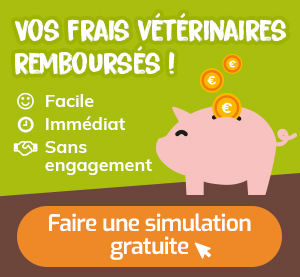
function showAssuranceForm () {var siteReferer = var id_race_association = ”; //console.log(id_race_association);success: function (html) {}});}document.addEventListener (‘DOMContentLoaded’, () => {$ (‘# assuranceModalBanner’). on (‘show.bs.modal’, function (event) {showAssuranceForm ();});});
Life expectancy
Minimum: 10 years
Maximum: 13 years
The life expectancy of a Braque de l’Ariège is, on average, between 10 years and 13 years.
Calculate the human age of your Braque de l’Ariège!
To choose… 1 year 2 years 3 years Four years 5 years 6 years 7 years 8 years 9 years 10 years 11 years old 12 years 13 years 14 years old 15 years old 16 years old 17 years 18 years old 19 years old 20 years 21 years old
Maintenance and hygiene
| Ease of maintenance | |
|---|---|
| Cost of maintenance | |
| Hair loss |
| Drool level | |
|---|---|
| Ease of grooming |
Maintenance of Ariege Pointer remains very unrestrictive. Other than regular brushing and inspecting and cleaning his ears , there isn’t much to do in this dog.
It is recommended to brush the dog once a week to ensure the cleanliness of its coat and skin. His ears should be examined systematically after each outing and cleaned regularly to avoid possible deposits of debris.
Price and budget
Purchase price
Mini
€ 600 Maxi
800 €
The purchase price of a Braque de l’Ariège is between € 600 and € 800.
Annual maintenance cost
Mini
NC Maxi
NC
The annual maintenance cost of a Braque de l’Ariège is between NC and NC.
No name is currently proposed. Use our tool to find the name of your Braque de l’Ariège!
Want the best for your dog?
Create tailor-made food for your Braque de l’Ariège
I discover !
PROMO -30% | Delivered to you!

Physical activity
| Athletic | |
|---|---|
| Energy level | |
| Potential to play |
The Braque de l’Ariège is not the type to be satisfied with simple and short outings allowing it only to defecate. Like any hunting dog, he calls for long and frequent walks , ideally in the heart of nature (wooded area, countryside …).
Others
| Master character <span class="btnTooltip qTip2" title="- Calm: the master must be gentle and know how to show patience. – Active: the owner must be energetic and dynamic to live in harmony with his dog. – Hyperactive: the owner must be stimulating and very restless to suit the temperament of his dog.”> |
Calm |
|---|
FCI Information
FCI No.
177
FCI Group
Group 7: Pointing dogs
Recognized by FCI
Since 1955
</div



